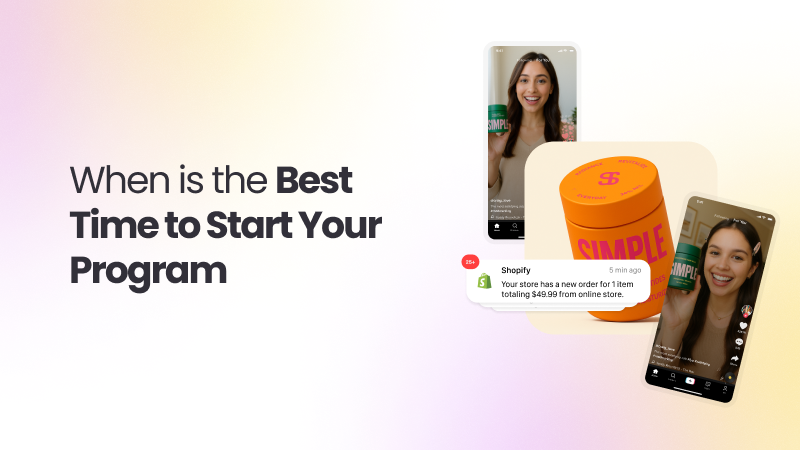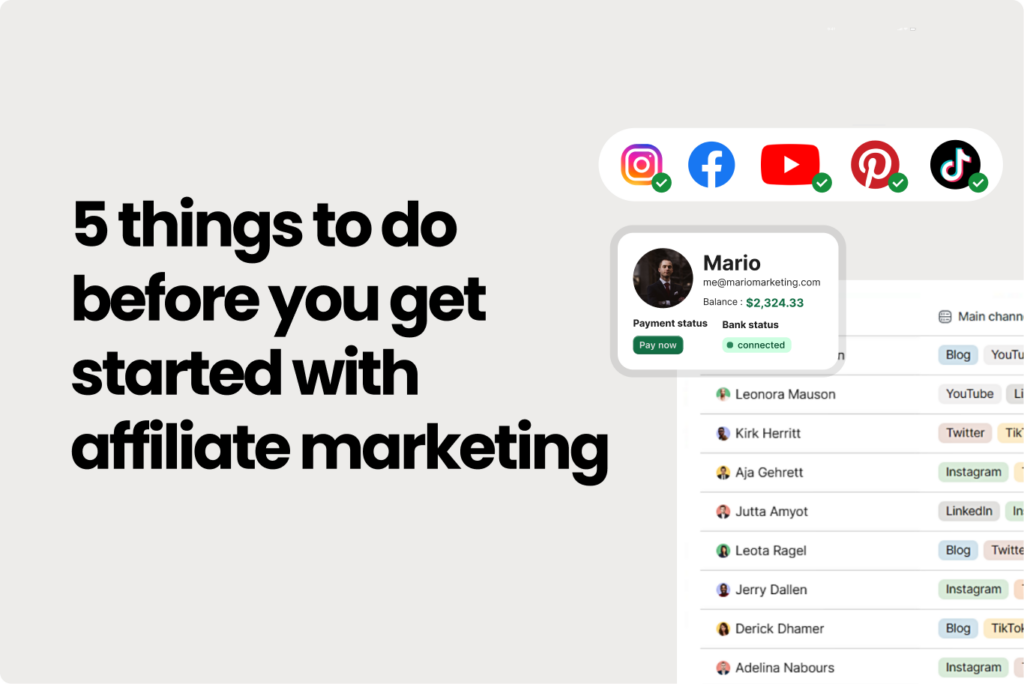
When building your business, there are a lot of growth strategies that come into play, from marketing to product to operations. Affiliate marketing is a common strategy that Shopify merchants use to gain brand awareness and a passive revenue stream. But does your business need to cross certain t’s and dot specific i’s before getting started? Let’s take a closer look at when to start with affiliate marketing and a few things you need to do before you get there.
The truth is, there is no concrete answer. But here are some things to consider if you’re unsure if affiliate marketing is right for your brand:
In-house affiliate marketing programs are most successful for businesses with a good profit margin. They’re very popular among Shopify stores and can bring in revenue and significantly improve brand awareness, especially if you work with big-name affiliates.

As with any new marketing initiative, establishing goals is the first step. Once you have defined your demographic, select a few key performance indicators (KPIs) to measure the success or failure of your program.
Your KPIs should be SMART: Specific, measurable, attainable, relevant, and time-bound. Your team should focus on the monthly, quarterly, and annual revenue you expect to achieve through affiliate marketing, as well as conversion rates, average order value, and the distinction between one-off and repeat customers.
Before finalizing those KPIs, consider how competitors in your industry are performing. Which influencers are they working with, and how much engagement are their posts getting? This should provide a clearer understanding of how your program can accomplish. It also gives you valuable insight into which types of influencers are more effective for advertising your business.
Facebook, YouTube, Instagram, LinkedIn. Where are your buyers spending the most time, and where are they most likely to engage? Platforms like Instagram are ideal for photo and story advertisements, and both Instagram and TikTok are excellent options for brands with a strong visual presence.
Facebook, Twitter, and BlueSky are great for text-based advertising. YouTube is great for long-term try-on or try-out style content, where affiliates can dive deeper into the benefits and how your product works. Each platform can be effective for advertising your product, and a multi-channel approach is best.
Well-compensated affiliates will feel valued on your team and be motivated to work harder to promote your brand and earn their commission.
Before the earning starts, you have to determine whether you’ll be paying your affiliates a commission or just a flat rate. Some stores pay their affiliates in store credit, but affiliates typically prefer monetary compensation for their time and work. Make sure your offering is competitive with other brands in your niche, and choose a commission rate that sits somewhere comfortable between 5%-35%. Automated payouts are also a strong selling point for affiliates looking to join your brand.
The right tooling facilitates every successful affiliate program. Choosing a platform that has comprehensive dashboards, easy payments, KPI tracking, and simplified management is arguably the easiest part of building your program.
Some programs have a steep learning curve, requiring someone with previous tech expertise or even developers to get involved and deploy your program. But you’ll find that tooling like this is largely unnecessary. The simple affiliate marketing tools are better for starting out, and can still support your business as it scales.
Are you ready to get started with an affiliate marketing platform that can get your team ready to launch in a flash? Try Simple Affiliate. There’s no learning curve, all the intuitive data you could want, easy onboarding, automatic payouts, and more.
It keeps you, your marketing team, and your affiliates happy. Book a demo today.